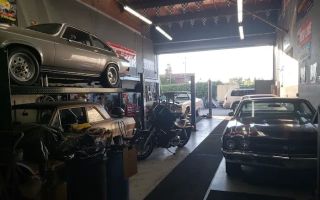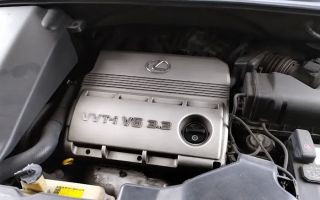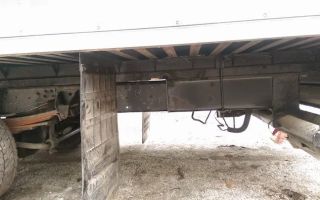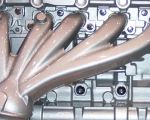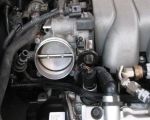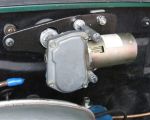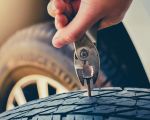When to Replace Your Car’s Shock Absorbers and Struts: Essential Maintenance for a Smooth Ride
Driving has always been a passion of mine. Whether it’s the thrill of a fast ride on a straight highway or the quiet comfort of a long road trip, there’s something about being on the road that excites me. However, over the years, I’ve learned that a car’s performance, comfort, and safety aren’t just about engine power or tire quality. The condition of the suspension system plays a huge role, and shock absorbers and struts are key components in ensuring a smooth and safe drive. Replacing these parts when necessary is not just a maintenance task; it’s essential for both your comfort and your safety on the road. As I began to notice some rough rides and difficulty handling bumps in the road, I realized it might be time to assess my car’s shock absorbers and struts. So, let’s dive into what these components do, how to tell when it’s time for a replacement, and why you shouldn’t ignore it. After all, no one wants to drive on a bumpy road indefinitely, right?
1. Understanding Shock Absorbers and Struts
Before getting into the signs that your shock absorbers and struts need replacing, it’s important to understand what they actually do. Shock absorbers and struts are both part of your car’s suspension system, which is responsible for ensuring that the car’s tires maintain contact with the road, providing a smooth ride, and stabilizing the car during turns, bumps, and stops.
Shock absorbers, often called shocks, are hydraulic devices that absorb and dampen the impact from the road. They control the motion of your car’s springs and prevent excessive bouncing after hitting a bump or pothole. Struts, on the other hand, are more than just shock absorbers. They’re structural components that integrate the shock absorber with the rest of the suspension system. In addition to absorbing shock, struts also provide support to the weight of the vehicle, affecting alignment and steering. In simpler terms, struts are like a combination of shock absorbers and a coil spring, and they’re typically found in the front suspension of many cars, while shock absorbers are more commonly used in the rear suspension.
Both of these parts are crucial to a safe and comfortable driving experience, and keeping them in good condition is essential. Over time, they wear out and lose their effectiveness, which is when you’ll begin to notice performance issues.
2. Signs You Need to Replace Your Shocks and Struts
I’ve learned the hard way that ignoring the signs of failing shocks and struts can lead to bigger problems down the road. Here are some key symptoms that indicate it’s time to replace these components:

Pick Your Part - Help Yourself
1232 Blinn Ave, Wilmington, CA 90744, USA
1. Rough Ride
One of the first signs I noticed that told me it was time to replace my shock absorbers and struts was a rough ride. When I started feeling every little bump and pothole in the road, it became clear that the shocks and struts weren’t doing their job anymore. If your car feels bouncy or you experience excessive body roll while turning, it’s a good indicator that these components have worn out and can no longer maintain the proper level of suspension control.

Pick Your Part - Greer
13054 E Wade Hampton Blvd, Greer, SC 29651, USA
2. Leaking Fluid
If you notice oil or fluid leaking from your shock absorbers or struts, this is a clear sign that they need to be replaced. Over time, the seals in these components can wear out, causing hydraulic fluid to leak. If the fluid level drops too low, the shocks and struts won’t be able to provide the damping needed to keep your ride smooth and controlled.
3. Uneven Tire Wear
Another symptom I noticed that made me question my suspension system was uneven tire wear. If your shocks or struts are worn out, they can no longer keep your tires properly aligned with the road. This can lead to uneven tire wear, especially on the inside or outside edges of the tires. If you notice that your tires are wearing out prematurely, it could be a sign that your suspension system, including the shocks and struts, needs attention.
4. Nose Diving or Squatting During Braking
One of the most noticeable problems I experienced was nose diving or squatting when I braked. If your car’s front end dips down significantly when you apply the brakes, or the rear end squats when accelerating, this is a clear indication that your struts or shocks are no longer providing adequate control. The loss of shock absorption can cause the car to lurch forward during braking or squat backward during acceleration.
5. Steering Problems
Struts also affect your steering ability. If you notice that your steering feels loose, or if your car seems to wander from side to side while driving, it could be due to worn-out struts. The suspension system is directly linked to your car’s handling and stability, and when the struts wear out, it can significantly affect how well your car responds to steering input.
3. How Long Do Shocks and Struts Last?
So, how long do these parts last? Well, the lifespan of shocks and struts depends on several factors, such as the type of car, driving habits, and road conditions. On average, shocks and struts should be replaced every 50,000 to 100,000 miles. However, if you drive on rough terrain frequently or have a heavy load in your car, they may wear out quicker.
It’s always a good idea to have your suspension system checked during routine maintenance. Most mechanics will inspect the shocks and struts during oil changes or tire rotations, and they’ll let you know if they show signs of wear. This helps to catch any issues early before they lead to bigger, more expensive problems.
4. Replacing Your Shocks and Struts
If your car’s shocks and struts are due for replacement, it’s important to have them replaced as soon as possible. Continuing to drive with worn-out suspension components not only affects the comfort and handling of your car but can also lead to additional damage to other parts of your suspension system, including your tires and alignment. Plus, it could affect your car’s ability to safely stop or turn.
When replacing your shocks and struts, make sure you’re using high-quality parts that match your vehicle’s specifications. It’s essential to choose parts that are made specifically for your make and model to ensure proper fitment and performance. I always recommend consulting with a trusted mechanic who can provide professional advice on the best components for your car.
Some vehicles, particularly those with strut-based suspension systems, may require additional parts like coil springs or mounts to be replaced at the same time. Be prepared for some additional labor costs if this is the case. However, the investment is worth it to restore your car’s handling and safety.
5. The Benefits of Replacing Shocks and Struts
Replacing your car’s shock absorbers and struts offers several key benefits:
1. Improved Comfort
Replacing worn-out shocks and struts can dramatically improve the comfort of your ride. With new, properly functioning components, you’ll notice a smoother drive and fewer bumps. This makes daily driving more enjoyable and less stressful, especially on rough roads or highways.
2. Enhanced Handling
Your car’s handling will improve significantly with new shocks and struts. Your vehicle will respond better to steering inputs, and it will handle corners, bumps, and sudden stops much more effectively. This leads to a safer driving experience for both you and your passengers.
3. Increased Safety
Perhaps the most important reason to replace your shocks and struts is safety. Worn-out suspension components can compromise your car’s ability to stop and turn safely. By replacing them, you reduce the risk of accidents caused by poor vehicle handling, especially in emergency situations or when driving in challenging weather conditions.
If you’re noticing any of the signs mentioned earlier, or if it’s simply time for a routine check, don’t hesitate to get your shocks and struts inspected. For professional assistance with replacement and suspension issues, consider reaching out to Rescue & Towing for expert advice and services.


